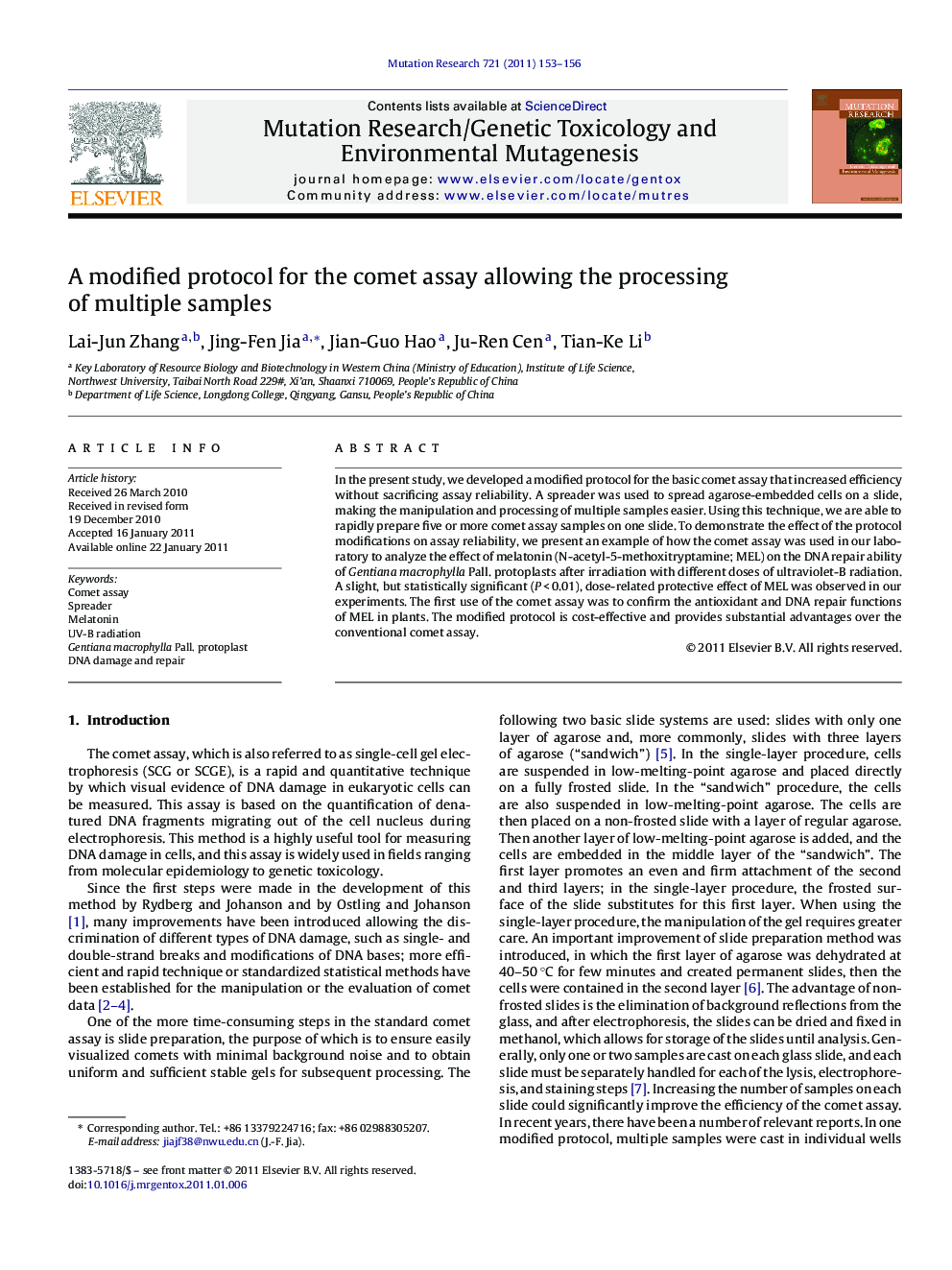| Article ID | Journal | Published Year | Pages | File Type |
|---|---|---|---|---|
| 2148362 | Mutation Research/Genetic Toxicology and Environmental Mutagenesis | 2011 | 4 Pages |
In the present study, we developed a modified protocol for the basic comet assay that increased efficiency without sacrificing assay reliability. A spreader was used to spread agarose-embedded cells on a slide, making the manipulation and processing of multiple samples easier. Using this technique, we are able to rapidly prepare five or more comet assay samples on one slide. To demonstrate the effect of the protocol modifications on assay reliability, we present an example of how the comet assay was used in our laboratory to analyze the effect of melatonin (N-acetyl-5-methoxitryptamine; MEL) on the DNA repair ability of Gentiana macrophylla Pall. protoplasts after irradiation with different doses of ultraviolet-B radiation. A slight, but statistically significant (P < 0.01), dose-related protective effect of MEL was observed in our experiments. The first use of the comet assay was to confirm the antioxidant and DNA repair functions of MEL in plants. The modified protocol is cost-effective and provides substantial advantages over the conventional comet assay.
